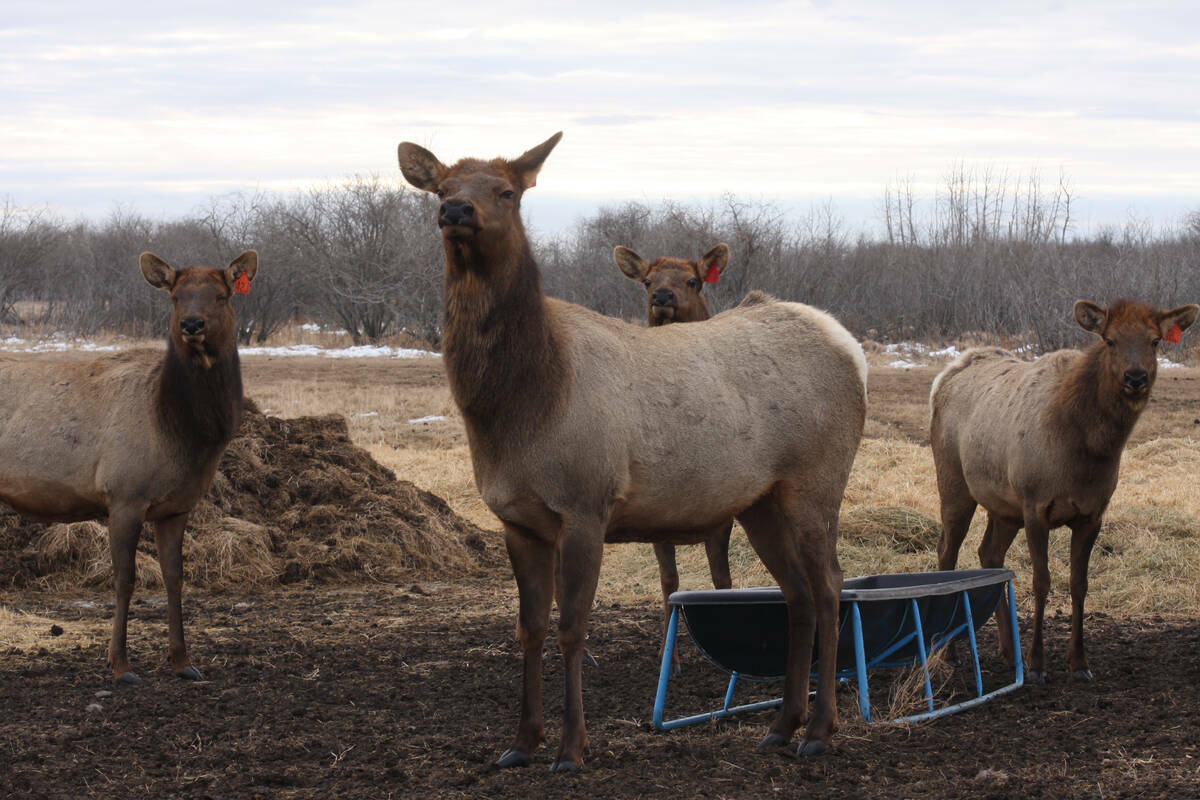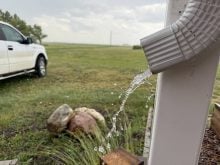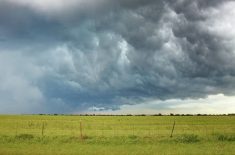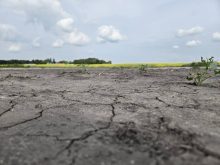Glacier FarmMedia – The best greeting for farmers attending the recent Irrigation Production Conference was the dump of snow outside the Agri-Food Hub and Trade Centre in Lethbridge.
Inside, the need for that type of precipitation was laid bare in order to avoid a water shortage this year.
The numbers tell the tale as to how badly needed are the same spring snow and rain events that rescued southern Alberta from the serious impacts of drought in 2001, the last time the region faced a similar situation.
Read Also

Cervid harvest preserves to be developed in the province under Bill 10
The Government of Alberta has given approval for creation of cervid harvest preserves.
Dennis Matis, Oldman basin infrastructure manager with Alberta Agriculture, warned during his presentation at the irrigation conference that the variability of mountain runoff periods is something those in the irrigation sector will need to prepare for in the future.
“Last year, all the (snow) pillows ran off a month ahead of time. In my 30-year plus career, I’ve never seen that before — all of the pillows,” he said. “Two years ago, we saw about 160 decametres — which a lot of water, about half the Oldman reservoir — (run off) over the November to March period during the winter.”
At the end of last summer, Matis described the situation on the South Saskatchewan River at Medicine Hat as falling below water management objectives.
“When things were getting pretty tight, I made a concerted effort to talk to the powers that be and (ask), ‘can we go below that objective’ because things were so dire.”
There were concerns that the system wouldn’t be able to meet municipal water supplies over the winter.
“It was getting that way.”
Alberta was able to meet its obligations to send half the natural flow of the South Saskatchewan River Saskatchewan with room to spare. However, it was a diminished quantity from previous years and the least amount in the past two decades while demand in Alberta came close to reaching g all-time highs.
“The demand was hot and heavy. It wasn’t a record year but well above average,” he said.
The LNID (Lethbridge Northern Irrigation District) had the second highest demand in the past 30 years.”
That demand was complicated by a leaky headworks canal that had been repaired, “but the fix didn’t work the first time around.”
Contractors are currently working on a permanent fix using a liner replacement that is expected to be completed this spring.
While outlining some of the mountain snowpack conditions that are among the lowest seen in a generation, Matis stressed the province has been at this point in the winter in the past. There was a spring recovery in previous dry years that can happen again this season, he added.
That doesn’t mean the current situation isn’t serious.
“We have been in several years — I’d say from 2015 onward — of below normal supply. Maybe one year is an exception in the last seven years. The upper Oldman was the second lowest inflow (historically),” he said.
In presenting current projections for this spring along the Oldman and St. Mary rivers, Matis said even if precipitation and runoff capture are at median levels, southern Alberta will be in good shape. Low levels on both could lead to a worst-case scenario.
“If we get median supply on the southern tributaries, we’re just under 70 percent of full, which is very palatable,” he said.
Matis said the province will be pulling out all the stops to ensure as much water as possible will be captured during runoff events.
That includes the arduous task of pulling out snow and ice from canals to capture runoff if it comes early.
“This is very costly, but everything is on the table right now,” said Matis.
The Alberta government — particularly the environment ministry — has been driving home the need to prepare for this upcoming season, pushing the need for development of water sharing agreements that will allow for all stakeholders to access the resource.
It’s also convened a drought command team while contracting a private firm to develop enhanced modeling of the different scenarios that might play out this year.
David Westwood, general manager of the St. Mary River Irrigation District (SMRID), commended the government’s actions.
“I like the fact that they are being conciliatory and reaching out to the users, opposed to trying to come up with a prescriptive plan. Implementing that on the users wouldn’t be as efficient than asking for input,” he said.
It’s a sentiment Westwood said he’s hearing across different water-using industrial sectors and municipalities outside of irrigation districts.
As for SMRID, which is facing some of the most severe consequences if conditions don’t change, Westwood said it remains committed to expanding irrigation area. A ratepayer plebiscite in 2022 approved increasing irrigated area by 80,000 acres, although Westwood said there will be a pause after the initial 15,000 acres.
That was the plan from the beginning, before the stress put on the system last season, he added.
Westwood said the district will be presenting its allocations to its members during its annual general meeting in April, hinting that it will be a more conservative estimate than usual to avoid tahe allocation rollbacks seen in 2023.
It’s not just Alberta that will face significant impacts if Mother Nature doesn’t help out the river level situation this spring.
In a statement, Saskatchewan’s Water Security Agency (WSA) said Lake Diefenbaker, the largest reservoir on the South Saskatchewan River, is anticipating downstream outflow reductions in the spring.
That effort will allow for early storage to be accumulated by April, which would usually be seen in May.
The WSA will be conducting snow surveys in February at 130 locations to help understand what the expected runoff and moisture levels will be going into the spring.
– Alex McQuaig is a reporter with The Western Producer.















